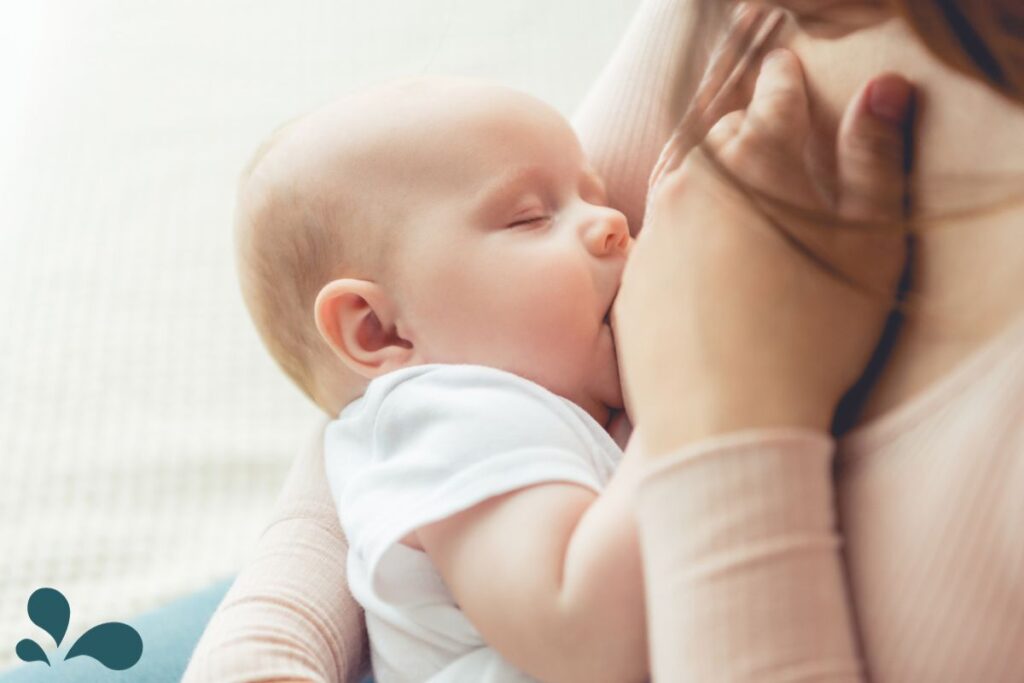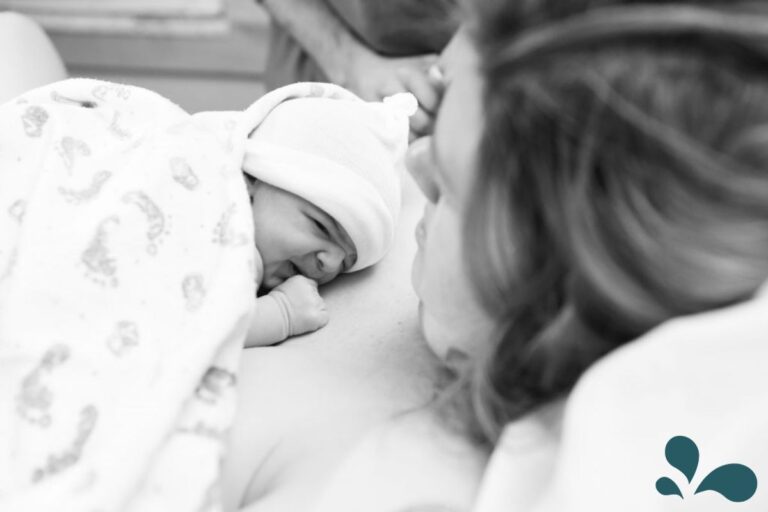Breastfeeding is not always all snuggles and full bellies – sometimes, there are difficulties and complications. Mastitis is one of the possible complications of breastfeeding. Mastitis occurs in about 2-10% of breastfeeding women but is no cause for alarm. If you have mastitis, you are not alone! Let’s go over what mastitis is, how to manage mastitis, and how to prevent mastitis!

What is Mastitis?
Mastitis is inflammation of the breast, most commonly referred to as an infection of the breast. Symptoms of mastitis include the following:
- Breast pain
- Redness
- Body aches
- Fever
- Chills
It’s important to note that mastitis can happen at any point during your breastfeeding journey, but most of the time, mastitis occurs during the six weeks after you deliver your baby.
What Causes Mastitis?
The following problems can cause mastitis:
- Oversupply of breastmilk
- Damaged nipples
- Infrequent feedings
- Rapid weaning
- Shallow latch
- Illness in baby or mom
- Plugged milk duct
- Pressure on the breast (tight bra and/or clothing or seatbelt)
Many of these problems are caused by breast engorgement for too long or ineffective milk removal.
We want to take a moment and remind you that getting mastitis happens – you didn’t do anything wrong if you get mastitis. There are great ways to manage your pain, heal your body, and prevent mastitis from happening in the future.

How to Manage Mastitis Pain
You might have mastitis if you have a fever over 100 ̊F, your breasts are firm, red, and tender, and if you have muscle aches and pains similar to flu-like symptoms.
At-home remedies for mastitis are available! You can take mild pain relievers such as Tylenol or Ibuprofen after consulting your doctor. These will also help with inflammation.
The most important thing to do to manage mastitis pain is to keep breastfeeding and help your breasts drain the breastmilk properly (make sure that your baby has a deep latch). You can then apply cold compresses after feeding or pumping to reduce inflammation. Be sure to consult with a lactation consultant if you feel your feeding techniques need more attention.
Update 8/1/22:
The Academy of Breastfeeding Medicine just updated its protocol for Mastitis. They no longer recommend using heat, vibrating devices, deep massage, or pumping to help manage mastitis. Below you will find the updated recommendations:
- Know that symptoms may resolve with “conservative care and psychosocial support.”
- If you have signs and symptoms of mastitis, please reach out to an IBCLC that can give you a personalized care plan to help resolve these symptoms. This may include contacting your doctor if symptoms worsen.
- Breastfeed your baby on-demand – do not aim to “completely empty” your breasts.
- Breastmilk supply is demand-driven. Since we don’t want to increase your supply and continue the problems that may have caused mastitis in the first place, we do not want you to be adding extra pumping sessions to “empty” your breasts.
- If you are pumping, only remove the amount of milk that baby needs.
- Decrease inflammation and pain
- Take Tylenol and Ibuprofen
- Use ice packs for 10-20 minutes at a time
- Lymphatic massage to help drain the extra fluid in the breast
- Taking sunflower lecithin (5-10mg daily) can help reduce inflammation
- Avoid deep tissue massage and the use of vibrating devices to massage the breasts
- Minimize breast pump usage
- If you are breastfeeding your baby – avoid using breast pumps to remove more milk as breast pumps stimulate the breasts without removing as much milk as a baby does
- If you are exclusively pumping or pumping when away from the baby, be sure to use your hands to express more milk. Pump on a schedule that mimics your baby’s feeding schedule and only pump the amount of milk needed for one feeding.
- Note: There is no need to pump and dump milk.
- Wear an appropriately fitting and supportive bra
- Avoid saline soaks – such as Epsom salts in a Haakaa
- Utilize Therapeutic Ultrasound (TUS)
- The use of a specialized machine that sends ultrasound waves into the body has been found to reduce inflammation and swelling.
- Consider taking probiotics
- Taking a probiotic with Limosilactobacillus fermentum or Ligilactobacillus salivarius strains has been found to help reduce mastitis
- Where appropriate – be treated with antibiotics

How to Prevent Mastitis
Studies have shown that taking a probiotic during the late stages of pregnancy may lower the chance of getting mastitis. Another simple way to prevent mastitis is to work on your breastfeeding technique to drain your breastmilk each feeding session. Contact an IBCLC for an assessment of your mastitis. They can help you discover your mastitis cause, give ideas of things to fix those problems, and work with you and your healthcare provider to help you recover quickly from mastitis.
Schedule an Online Consultation
If you’re concerned about mastitis, you should set up a consultation with anyone on our team. We can help you 1:1 go over breastfeeding techniques that will help you prevent mastitis pain.








